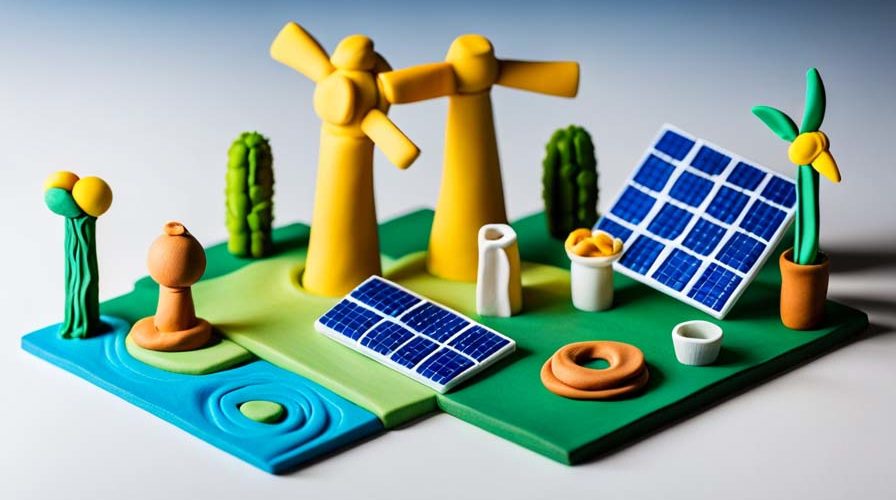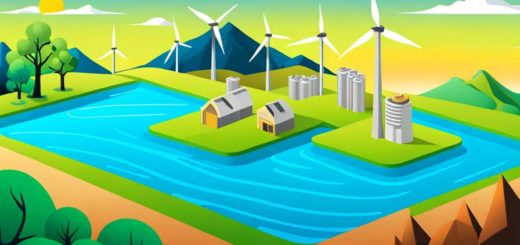The Growth of Green Energy in Australia

As the world increasingly shifts towards green energy sources, Australia finds itself at a critical juncture. The nation’s energy landscape is dominated by fossil fuels, but with the need for more sustainable energy solutions growing stronger, it’s time to explore the benefits of transitioning to green energy. This article aims to inform readers about the importance of green energy for Australia’s future and provide an overview of its current state, benefits, and types, as well as discussing the challenges and government initiatives.
The State of Green Energy in Australia
Green energy is on the rise in Australia, with renewables accounting for around 21% of the nation’s electricity generation in 2020. The growth of green energy has been driven by several factors, including technological advancements, cost reductions, and increased public awareness. A recent report by the Clean Energy Council shows that the country is on track to meet its targets, thanks in part to the adoption of clean energy solutions.
However, despite the progress made, there’s still a long way to go. As mentioned earlier, transitioning to green energy is crucial for Australia’s future, so it’s essential to understand the benefits and challenges in order to accelerate its adoption.
Benefits of Green Energy
Green energy offers numerous benefits, both environmentally and economically. The most apparent advantage is the reduction in greenhouse gas emissions, which helps combat climate change. Furthermore, renewable energy sources, such as solar and wind, are abundant and don’t deplete natural resources like fossil fuels do. This means that green energy is not only environmentally friendly but also sustainable in the long term.
From an economic perspective, investing in green energy can create new job opportunities and stimulate economic growth. As the demand for eco-friendly energy solutions increases, industries will need skilled workers to design, install, and maintain renewable energy infrastructure. Additionally, green energy can lead to increased energy security by reducing dependence on imported fossil fuels and lowering exposure to fluctuating fuel prices.
Types of Green Energy
There are several types of green energy available in Australia, including solar, wind, and hydro energy. Solar energy is harnessed from the sun’s rays using photovoltaic (PV) panels. It’s a popular choice for homeowners and businesses because it can be easily installed on rooftops and other structures. Australia has vast solar potential due to its abundant sunshine, making it an ideal location for solar energy projects.
Wind energy, on the other hand, uses wind turbines to generate electricity from the kinetic energy of moving air. Wind farms can be found both onshore and offshore, with Australia’s vast coastline offering numerous opportunities for wind energy development. Wind energy is not only clean and renewable but also has the potential to generate a significant amount of electricity when the wind conditions are favourable.
Hydro energy, or hydropower, is produced by converting the kinetic energy of flowing water into electricity. Australia has several hydropower plants, with the most notable being the Snowy Mountains Scheme. Although hydro energy is a reliable and clean source of power, its potential for expansion is limited due to the need for suitable water resources and topography.
Challenges to Green Energy Adoption
While green energy offers many benefits, there are still challenges to its widespread adoption in Australia. Some of the main obstacles include political and economic factors. On the political front, there is a need for stronger support from the government in the form of policies, incentives, and regulations that promote the growth of renewable energy. Without a clear and consistent policy framework, it can be difficult for the industry to attract investment and plan for the long term.
Economically, the upfront costs of green energy infrastructure can be a barrier for many individuals and businesses. Although the operational costs of renewable energy are generally lower than those of traditional energy sources, the initial investment required can be substantial. In order to overcome this challenge, innovative financing options and incentives may be needed to encourage more people to adopt green energy solutions.
Another challenge is the intermittent nature of some renewable energy sources, such as solar and wind. As highlighted by the World Meteorological Organization, the reliability of these sources can be affected by weather conditions, creating concerns about grid stability and energy security. This issue can be addressed by investing in energy storage solutions and developing a more flexible and resilient energy grid.
Government Initiatives to Promote Green Energy
In response to the growing demand for green energy, the Australian government has introduced several initiatives aimed at accelerating the transition. These include the Renewable Energy Target (RET), which sets specific goals for renewable energy generation, and the Clean Energy Finance Corporation (CEFC), which provides financing for clean energy projects.
State and territory governments have also taken steps to support green energy adoption, such as offering feed-in tariffs for solar energy and implementing renewable energy targets. These initiatives are crucial in promoting the growth of green energy in Australia and demonstrate the government’s commitment to a more sustainable future.
However, as previously mentioned, there is still room for improvement in terms of policy support and incentives. For Australia to fully embrace the potential of green energy, ongoing collaboration between the government, industry, and the public will be essential.
Future of Green Energy in Australia
Looking ahead, the future of green energy in Australia appears promising. With ongoing technological advancements and cost reductions, green energy sources are becoming increasingly competitive with traditional energy sources. As public awareness of the benefits of green energy continues to grow, it is likely that the demand for clean, renewable energy will only increase.
In the coming years, it’s expected that more Australians will adopt green energy solutions for their homes and businesses, and new large-scale renewable energy projects will be developed. As the transition to green energy progresses, it will be vital for Australia to address the challenges mentioned earlier and continue supporting the growth of the industry through government initiatives and public engagement.
Emerging technologies, such as battery storage and smart grids, will play a significant role in shaping the future of green energy in Australia. These innovations will help address the intermittency issues associated with solar and wind energy, ensuring a more reliable and resilient energy system. Furthermore, advancements in energy efficiency and demand management will also contribute to a more sustainable and low-carbon future for the country.
Conclusion
As we’ve explored throughout this article, transitioning to green energy is crucial for Australia’s future. The benefits of green energy, such as reduced greenhouse gas emissions, increased energy security, and job creation, make it a compelling alternative to traditional energy sources. With a wide range of renewable energy options available, including solar, wind, and hydro energy, there are numerous opportunities for Australians to embrace a more sustainable future.
However, challenges remain in terms of political support, economic barriers, and grid reliability. Addressing these challenges will require ongoing collaboration between the government, industry, and the public. The good news is that Australia has already made significant progress in the green energy sector, and with continued effort, the future looks bright for renewable energy in the country.
So, what can you do to support the transition to green energy in Australia? Start by educating yourself about the different types of green energy and their benefits. Consider investing in renewable energy solutions for your home or business, and support policies and initiatives that promote the growth of the industry. By taking action and embracing green energy, we can collectively ensure a more sustainable and prosperous future for Australia.



